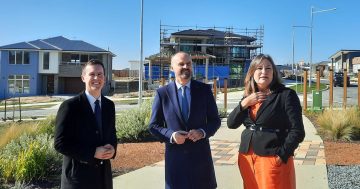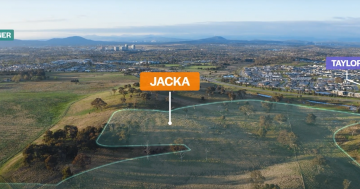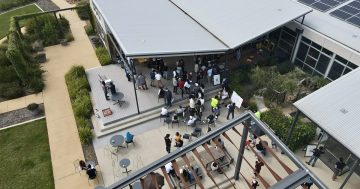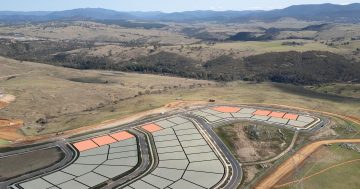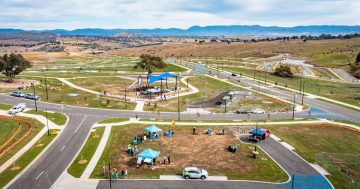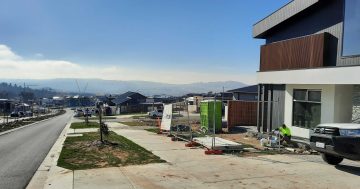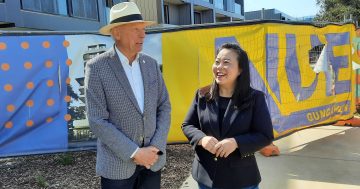
The Valiveti family was one of the lucky few to land a block in Macnamara in Ginninderry. Photo: Supplied.
When does the Barr Government’s land release program and overwhelming bias towards infill development become a political problem that can’t be ignored?
The Canberra Liberals have campaigned relentlessly on this issue over the years to no avail, but the weight of numbers must have some effect eventually.
The weekend before last, more than 7400 buyers registered for one of 51 blocks in the second release at Macnamara in the joint venture development of Ginninderry.
The first release drew 8700 applicants for 71 blocks in November, while in the Molonglo Valley, the first release in Whitlam attracted 7566 applicants for 92 blocks and the second in February pulled even more – 12,417 applicants for 101 blocks.
That’s a lot of people wanting a traditional house and land package and some dirt of their own, not an apartment or even a townhouse.
While the medium and high-density sector is booming, families need space, and the fact is developers are not supplying many three-bedroom apartments or townhouses.
Architects and industry are calling for more of this so-called ‘missing middle’, but even then, who can blame buyers for wanting a garden and some sort of backyard and no body corporate to pay for?
The other problem is the record prices being paid for established homes, leaving many first-home buyers sitting on the sidelines at auctions, wondering what they have to do to get inside the door.
Even the infill development where large blocks are split are not necessarily any, or that much cheaper, than the original properties or affordable for many.
Opposition Leader Elizabeth Lee says the census data showing Canberra’s surprising population growth – an extra 20,000 people we weren’t reckoning on – is an opportunity to adjust the indicative land release program to provide more blocks for stand-alone houses.
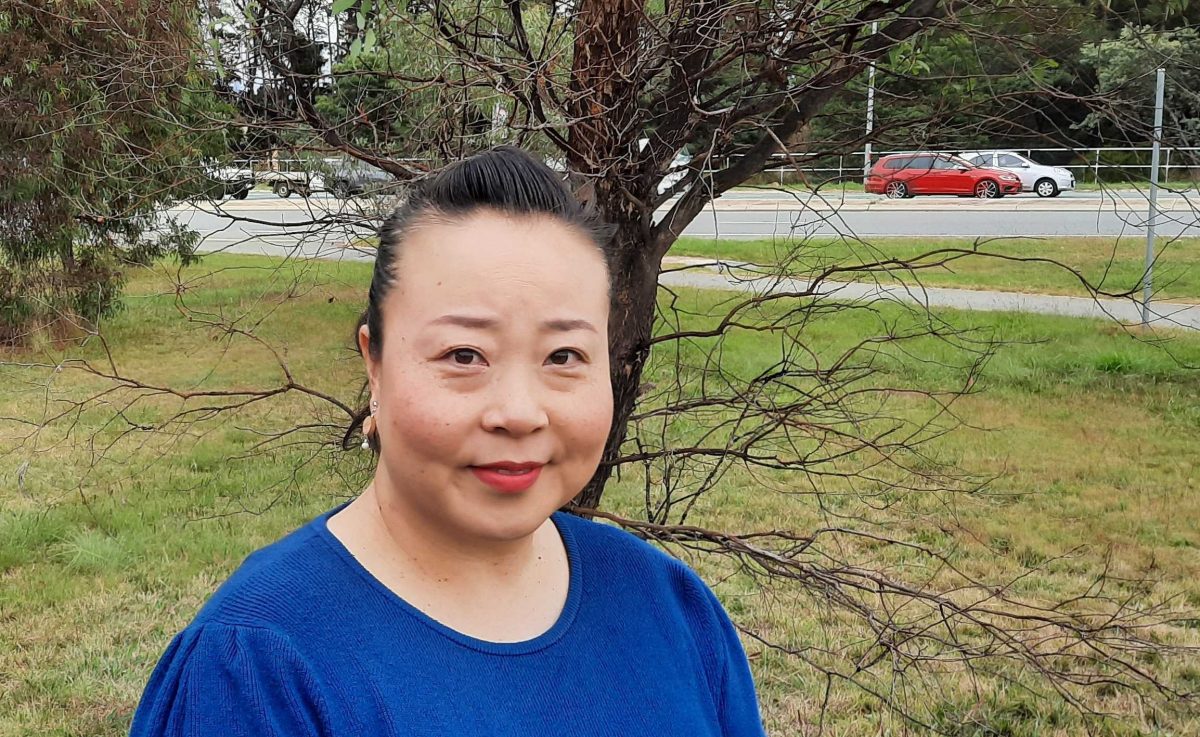
Opposition Leader Elizabeth Lee wants more land released and a more balanced infill target. Photo: Ian Bushnell.
She continues to assert that the government is choking supply to maintain prices to boost the Territory’s bottom line.
Of course, it would be interesting to see if the Liberals would be as generous or less worried about the Territory’s finances in government.
Chief Minister Andrew Barr has always resisted these arguments, saying enough land is being released and that there is only so much the government and industry can manage at one time.
And there are new developments in train in Ginninderry, Gungahlin and Molonglo, not to mention Tralee and Googong across the border.
Mr Barr also rolls out the familiar arguments about urban sprawl and the government’s commitment to a compact city.
These carry some weight. It is not a simple matter to add another suburb to the city which will need services, transport links and schools.
Much of the potential new land has engineering and environmental challenges, and many Canberrans would not like to see any more bushland go under housing.
The government is investigating a great swathe of land from Belconnen to Tuggeranong on the western edge of the city for housing potential and has released a number of planning studies.
Along with the challenges already mentioned, there is also the bushfire threat, remembering that this was where the 2003 firestorm rampaged through to devastate Weston Creek.
But a bushfire study has concluded that overall the risk can be managed.
Ms Lee also blames the 70:30 infill/greenfield bias for the Canberra housing market being more unaffordable and lacking choice.
This is not all of Labor’s making, with the figure part of the price of the governing agreement with the Greens.
The issue is not black and white but nuanced with multiple aspects. But as the government heads towards the back half of the term towards an election, and more people miss out on their dream home and have to settle for what they perceive as an inferior product, views can harden – especially if the Liberals can offer a perceived easy alternative.
Is that when the policy becomes a political liability?
The fact is demand is far outstripping supply, and the other products on offer – a home in an established suburb, townhouse or apartment – do not appear to be attainable or palatable for one reason or another.
The government should review the effectiveness of the greenfield/infill ratio to see whether it is too unbalanced and driving people into housing arrangements they do not want.
It should also review the indicative land release program to see if more blocks could be brought to the market sooner, if too much land is being zoned for multi-unit development, and whether it is feasible to expedite any new areas on the horizon.












